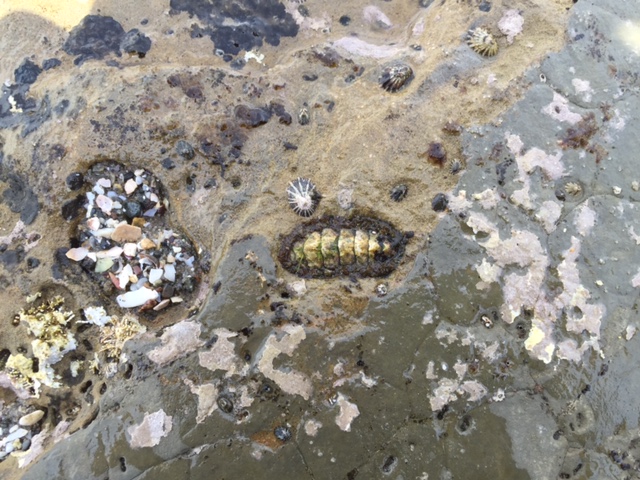 NPS Photo – Common tidepool organisms at Cabrillo National Monument. From left to right: Aggregate Anemone, Conspicuous Chiton, limpets.
NPS Photo – Common tidepool organisms at Cabrillo National Monument. From left to right: Aggregate Anemone, Conspicuous Chiton, limpets.Tidepoolers were thrilled to discover some California Moray Eels (Gymnothorax mordax) peeking out from under the rocks. These fierce-looking fish are long and slender, lacking pelvic and pectoral fins. Eels have a bad reputation because their mouths are always open, revealing their many sharp teeth. However, this is a necessity for them because they have no gill covers, unlike other fish. California Moray Eels must open and close their mouths to breathe – this motion pushes water over their gills, a process that is usually accomplished by fish through opening and closing their gill covers. California Moray Eels also differ from other fish by lacking scales! Instead, they are covered by a protective coating of mucus, giving them their bright yellow-green color.
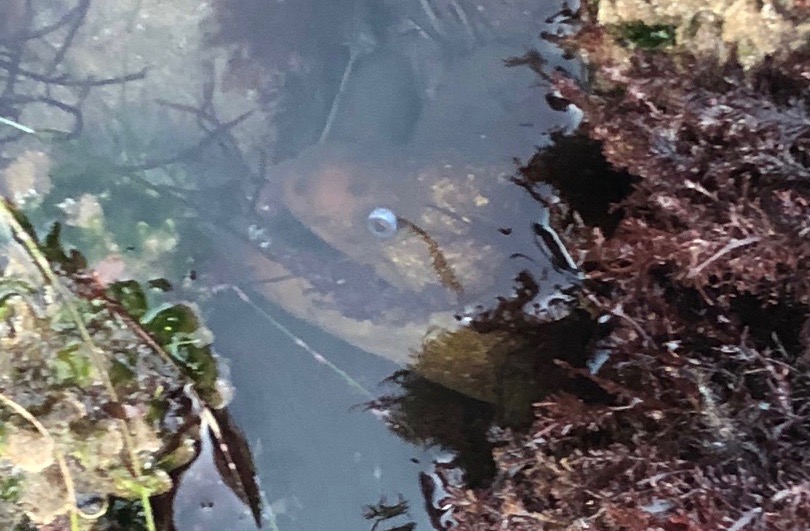 NPS Photo/Tansy Woods – A California Moray Eel peeking out of a bed of algae in Cabrillo’s tidepools.
NPS Photo/Tansy Woods – A California Moray Eel peeking out of a bed of algae in Cabrillo’s tidepools.But eels are not the only uncommon visitors that have appeared in our tidepools of late. Two extremely rare species, Green Abalone (Haliotis fulgens) and what’s likely an Ochre Sea Star (Pisaster ochraceus), have been seen in the past few weeks. We speculate that recent storms have washed these threatened species up from a source population, perhaps from the protected Kelp Forest off of our coast. Abalone have been absent from our Rocky Intertidal Zone for years due to initial overharvesting followed by a devastating disease known as Withering Foot Syndrome. Withering Foot Syndrome is caused by the bacterium Xenohaliotis californiensis and, like the name implies, its symptoms include withering, or atrophy, of the foot muscle. With a poorly-functioning foot muscle, infected abalone can’t attach to rocks, a necessity for foraging and safety.
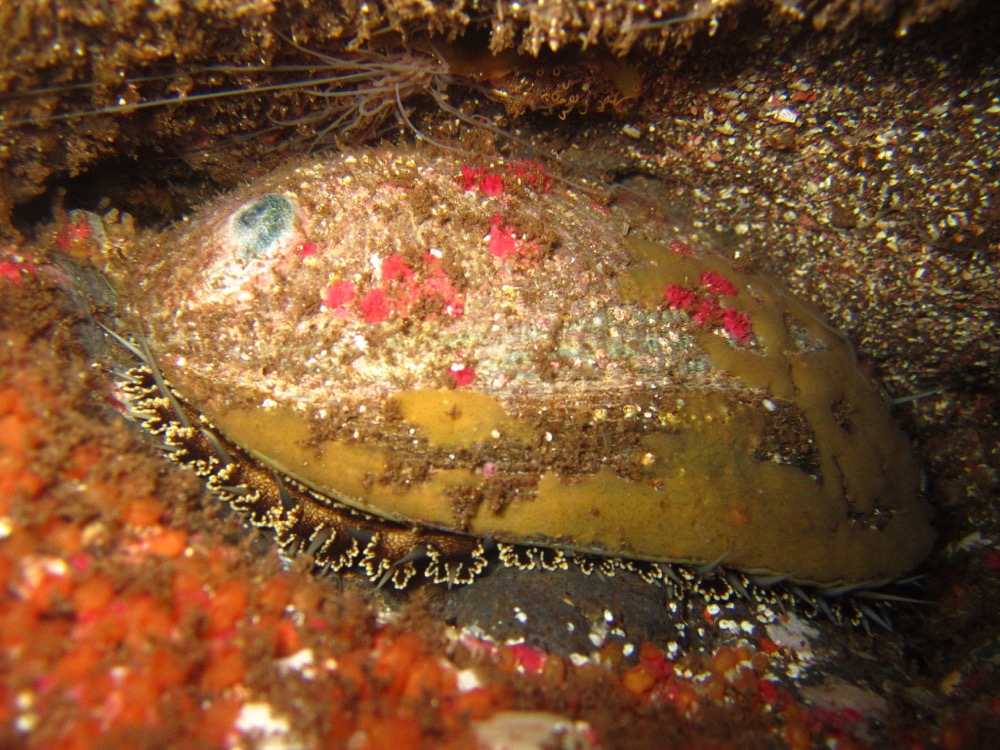 Photo courtesy of iNaturalist, user Arturo Velasco – A large Green Abalone in the tidepools of Baja California.
Photo courtesy of iNaturalist, user Arturo Velasco – A large Green Abalone in the tidepools of Baja California.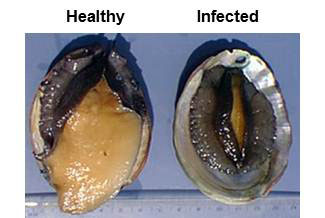
Photo courtesy of California Department of Fish and Wildlife – A comparison between a healthy Red Abalone (Haliotis rufescens) and one suffering from Withering Foot Syndrome (right).
Sea star populations have also been ravaged by disease. Like Withering Foot Syndrome, Sea Star Wasting Disease (also known as Sea Star Wasting Syndrome) atrophies tissues in sea stars, though in a much more dramatic way – it “melts” them from the inside out. This disease is caused by a virus that has affected at least twenty different species of sea stars. As a result of these two diseases, abalone and sea star populations from Alaska to Baja California have crashed severely. Thus, it was quite a pleasant surprise to see these animals appear in our tidepools.
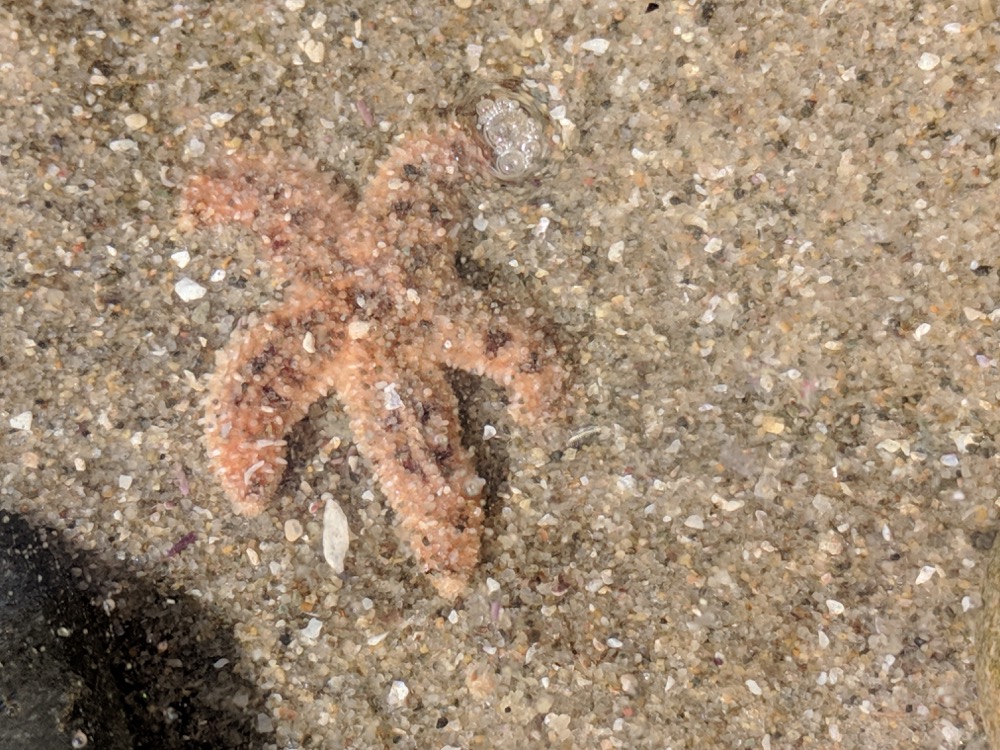 NPS Photo/Samantha Wynns – A small sea star nestled in the sand of Cabrillo National Monument.
NPS Photo/Samantha Wynns – A small sea star nestled in the sand of Cabrillo National Monument.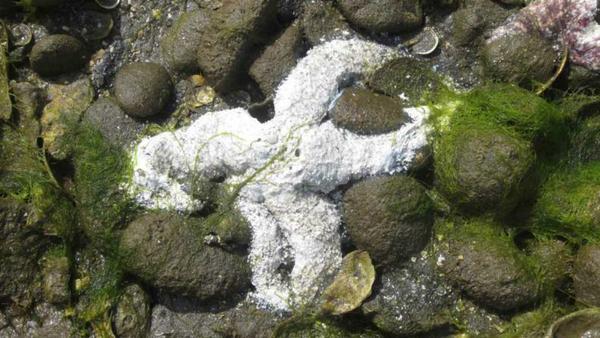 NOAA Photo, courtesy of Pete Garland – A “melting” sea star in the late stages of Sea Star Wasting Disease.
NOAA Photo, courtesy of Pete Garland – A “melting” sea star in the late stages of Sea Star Wasting Disease.Cabrillo is open 365 days a year, so this holiday season bring the family to the park to explore our tidepools – you never know what you’re going to find! But always remember that there is no taking of any kind from this protected area – please leave the eels, sea stars, abalone, and all other creatures as they are.
References
Field Guide to Cabrillo’s Rocky Intertidal Zone:
http://cabrilloeducation.com/resource-guides
More on Withering Foot Syndrome:
https://www.wildlife.ca.gov/Conservation/Laboratories/Shellfish-Health/Abalone-Diseases
More on Sea Star Wasting Disease:
https://www.usgs.gov/ecosystems/fish-wildlife-disease/science/sea-star-wasting-disease
https://www.eeb.ucsc.edu/pacificrockyintertidal/data-products/sea-star-wasting/
